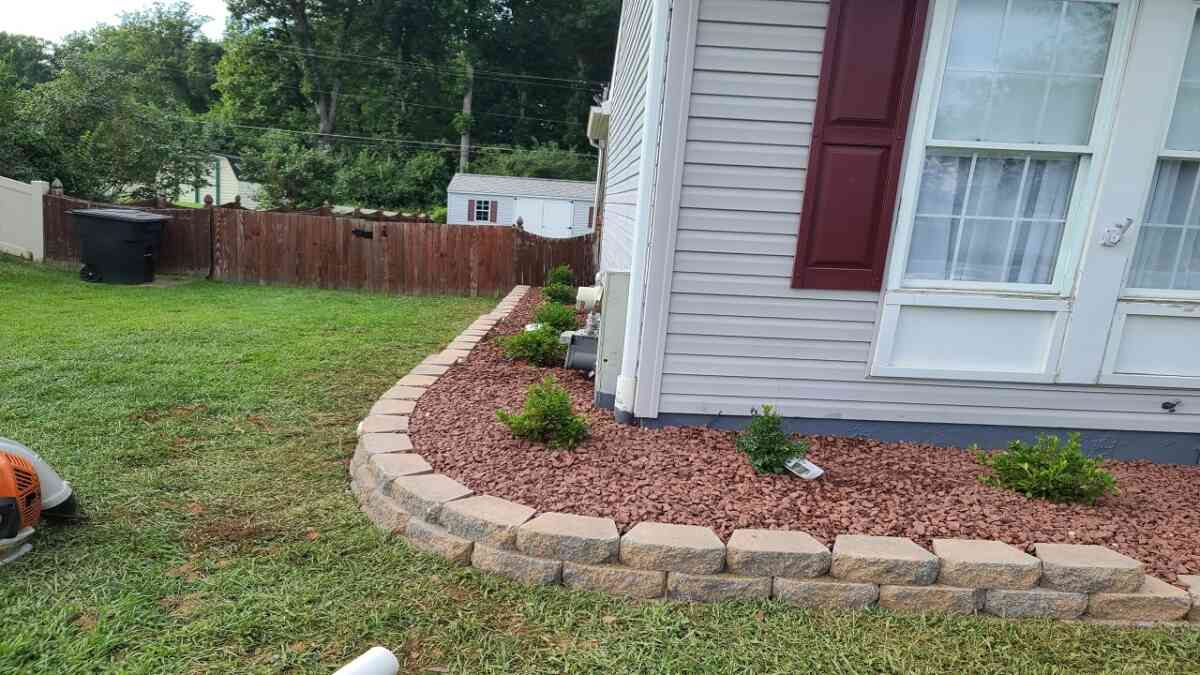Can I Cover Moss With Mulch?
Moss is a low-maintenance garden cover that is a great option for landscaped areas. It also improves drainage and serves as a great carbon sink. To find out if your soil is ideal for moss, collect a soil sample and give it to the neighborhood Cooperative Extension service. They will help you determine the pH of the soil and the nutrients in the soil.
Moss is a low-maintenance ground cover that is low-maintenance.
If you're in search of a low-maintenance ground cover, you should consider moss. Mosses are an ideal choice for patios, gardens and walkways. Mosses are evergreen and can thrive in shaded areas. They can be used to cover pavers and rocks, as well as terracotta pots. Because they are averse to cool temperatures, moss will remain green all through winter.
Moss is a seedless , non-seeding plant which can be grown in areas with low light. It does not require mowing or fertilizing and does not require much water. Its tiny rhizoids permit it to be able to attach itself to the surface without rooting. This makes it a perfect option for gardens because it needs only a little water and is extremely versatile.
Moss is an excellent plant for the ground because it requires no water and is low-maintenance. It needs no fertilizer or mowing, and it stays green all year long. It is ideal to plant it in acidic soils, like the soil that is in a garden since it thrives in soils with acidity. Most lawn grasses require pH between 6.0 and 6.5. Centipedegrass is one grass that thrives with a higher pH.
The best method to grow moss in your garden is to make sure to cover it with mulch. This will stop weeds from growing and keep the soil damp.
It is a carbon sink
Moss is a great carbon sink, and mulching it is one of the best ways to improve its effectiveness. It enhances the amount of carbon that is labile in the soil and creates the right conditions for moss growth. It also helps reduce emissions of CO2 since it slows down the rate of carbon decomposition.
The study found that moss restoration enhanced the rate of ecosystem respiration. The EER of moss was considerably greater in the site that was restored as compared to the cutover site at both times in 2001 as well as 2002. This is due to the increased rewetting process that occurred during the process of restoration. This rewetting maintained soil moisture at or above 50% and water pressure at or above -100mbar and allowed adequate Sphagnum development.
It decreases erosion
Moss is a great option to prevent erosion in your garden. Moss can cover everything from pathways and pavers to rocks and terra cotta pots. Moss is especially good in capturing runoff from storms because of the way that its leaves hold water. The mulching of moss can be an easy way to add additional protection against erosion.
Moss can be cultivated in clumps , or in tiny fragments. The most appealing thing about the moss is that it does not require any fertilizer or chemical intervention. Moss is resistant to heat drought, and pests and does not taste great to deer. It's also good for beneficial insects.
If you're looking for a more permanent solution, plant creeping Phlox. Its flowers look stunning in spring and will protect the soil against erosion. It also spreads slow and grows at a moderate pace. It's best to plant it in a space of approximately 12 inches.
If you'd like to stop erosion on a slope consider improving your plant care practices. Using a 2 to 3-inch layer of mulch can keep the soil in position when it rains heavily. Planting plants vertically , and then building up soil around the hole for planting will help prevent soil erosion because it creates a well which will store water. This water will sink into the soil surrounding the roots of the plants.
It improves drainage in soils.
Many gardeners realize that poor drainage of the soil can be a serious issue. There are numerous solutions to this issue which include the addition of organic matter for the soil. It is possible to test the soil's drainage by digging a small hole around 12 inches wide. It doesn't have to be precise, but the hole must be able drain completely. If not then you might need to make use of a soil test kit.
If the issue is limited to a tiny space, it is possible to apply a fungicide on the zone. Ferrous Sulfate is an effective fungicide that is water-soluble. It promotes healthy soil pH and kills moss after contact. It's cost-effective and simple to apply. If the issue persists, you might need to improve drainage of the soil by applying lime amendments to the soil.
If you intend to cover peat moss by laying down mulch, be sure it is not too thick. A dense layer of mulch can be able to ward off weeds, but will also dry out the soil. It also blocks water to penetrate under the layer of mulch. It can also lift off the surface after it gets dry.
It also adds color
One of the best methods to add the appearance of color and texture to your garden is to cover the moss with mulch. This kind of moss thrives best in shade, and doesn't require any maintenance. It is a perennial plant that grows in planting zones ranging from four to nine in the USA. It can also be utilized as a groundcover.
Mulch aids in the suppression of weeds and aids in the release nutrients. Peat moss is not a good choice for mulching because it's easy to blow away. It also becomes dry and becomes hydrophobic, so it's not eco-friendly. It is better to use salt marsh hay that can be harvested throughout the Northeastern U.S. from coastal estuaries and flood plains. Other good choices are sawdustand wood shavings, and compost pile material. These substances bind nitrogen to the soil and are great for composting.
It is a groundcover that requires minimal maintenance.
Moss plants are low maintenance groundcover plants with low maintenance. They don't require frequent fertilization or irrigation, however, they should be watered occasionally, especially in dry periods. Certain mosses will require more water during transplanting, so ensure to add plenty of water during this time. Mosses are often used as groundcovers for water gardens and Japanese gardens also in woodland areas.
If you're limited in space and are looking for low-maintenance plants, then try leadwort. It is a well-loved groundcover with flowers throughout the summer and the beginning of autumn. Its leaves change into stunning burgundy reds in the fall. You can also use mondo grass, a drought-tolerant groundcover that can withstand the foot traffic. The plant is characterized by its grass-like foliagethat is clumps quickly to cover an area. There are many varieties including the dark-leafed variety that creates a fascinating contrast against the lighter foliage.
Moss is low-maintenance and adapts well to a variety of soils. It does not require to be mowed or cut and has a soft surface. It is tolerant of moderate foot traffic and is good in shady areas. If you don't want to be a moss-loving gardener, you could choose a different groundcover, like creeping thyme, which is resilient and aromatic. Thyme thrives in dry areas and needs only moderate to no water.
It is not a weed.
If you've got an unruly yard covered with mulch is not a weed! The moss can spread over pathways and pavers, and can also cover any surface that is even if it's a bit porous. Moss requires regular moisturisation and an uncluttered surface.
Moss isn't a plant according to the standard definition of the term, but it is still a frequent problem in lawns. It tends to grow in damp or shady areas and is a threat to turf grass. It can even grow on rocks or soil that has been compacted. Unlike most lawn weeds, the moss doesn't respond to commonly used methods to control weeds. It is a natural species that has been present for thousands of years.
If the moss problem persists, it might be due to soil issues. The most common reason for an infestation of moss is a low soil pH and nutrient content. To identify the underlying problem you should test your soil to determine its pH as well as the amount of nutrients. When you've got the right details, you'll be able to do the appropriate steps to remove the moss.
Once the moss has established itself in the soil, it requires regular water. It must be watered regularly, preferably from rainwater since tap water is likely to contain minerals as well as other unfavorable substances that can damage the moss. Furthermore, moss thrives in shade, so do not cover it with leaves. If you do, the moss could not get enough sunlight and could result in fungal and bacterial growth.

